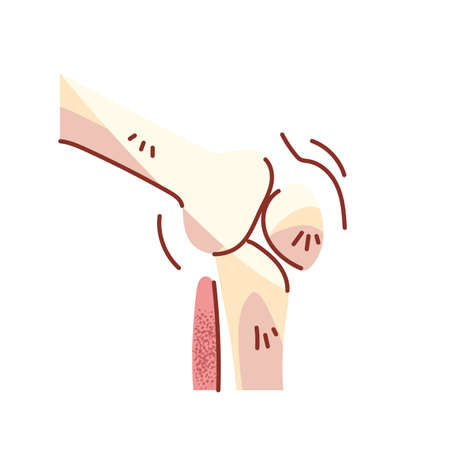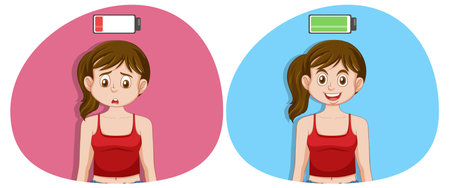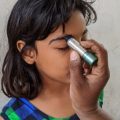Understanding Ubtan and Its Cultural Significance
Ubtan is much more than just a natural skincare remedy—it is a cherished tradition woven into the very fabric of Indian culture. Dating back to ancient times, ubtan has been used by generations for its remarkable ability to cleanse, nourish, and rejuvenate the skin. Traditionally prepared with a blend of natural ingredients like gram flour (besan), turmeric (haldi), sandalwood powder, milk, rose water, and herbal oils, ubtan embodies the wisdom of Ayurveda and holistic wellness. It holds special significance in Indian bridal rituals, especially during the Haldi ceremony, where it is lovingly applied to the bride and groom to bless them with radiant, glowing skin before their wedding. This ritual not only symbolises purity and auspicious beginnings but also celebrates the timeless beauty secrets passed down from grandmothers to mothers and daughters. Embracing ubtan in your regular skincare routine connects you to this rich heritage, letting you experience both the glow and grace that have defined Indian beauty for centuries.
Essential Natural Ingredients for Indian Skin
India’s age-old beauty wisdom is built around the use of natural kitchen ingredients, many of which have been trusted across generations for their powerful skin benefits. A regular skincare routine using natural ubtan blends begins with understanding these essentials. Let’s discover the key ingredients that are especially suited for Indian skin and how they help you achieve a healthy, radiant glow.
Key Indian Kitchen Staples for Glowing Skin
The following table highlights some traditional ingredients, each celebrated in Indian homes not only for culinary uses but also for their remarkable skincare properties:
| Ingredient | Hindi Name | Main Benefits for Skin |
|---|---|---|
| Turmeric | Haldi | Brightens complexion, reduces pigmentation, and fights acne due to its anti-inflammatory & antibacterial properties |
| Besan (Chickpea Flour) | Besan | Cleanses deeply, removes tan, gently exfoliates, and balances oily skin without stripping moisture |
| Sandalwood Powder | Chandan | Cools irritated skin, fades scars and blemishes, imparts a natural glow, and has a soothing aroma |
| Rosewater | Gulab Jal | Tones the skin, hydrates, calms redness, and refreshes dullness with its gentle astringent effect |
How These Ingredients Support Indian Skin Health
Turmeric (Haldi): A golden staple in every Indian household, turmeric is revered for its antiseptic and healing qualities. It evens out the skin tone and brings an instant brightness to dusky or sun-exposed complexions.
Besan: Used as a base for most ubtan recipes, besan gently exfoliates dead cells while keeping skin soft—ideal for balancing combination or oily Indian skin types.
Sandalwood (Chandan): Especially valued in warmer climates like India’s, sandalwood cools the skin after sun exposure and helps lighten dark spots left by acne or tanning.
Rosewater (Gulab Jal): A classic ingredient found in both urban and rural households, rosewater soothes sensitive skin and works as a refreshing toner before or after ubtan application.
Why These Ingredients Work Best for Indian Skin?
The unique climate and environmental conditions across India—from humid coasts to dry interiors—make these ingredients particularly beneficial. They address common concerns such as uneven tone, pigmentation, oiliness, heat rashes, and pollution-related dullness. When used together in a regular ubtan-based routine, they help maintain a youthful radiance that is naturally suited to Indian skin tones.

3. Step-by-step Preparation of Traditional Ubtan
Gathering Authentic Ingredients
To prepare a traditional Indian ubtan at home, start by collecting the following ingredients, all easily available in Indian households or local markets. For one application:
- Besan (gram flour) – 2 tablespoons
- Haldi (turmeric powder) – 1/4 teaspoon
- Chandan (sandalwood powder) – 1/2 teaspoon
- Kesar (saffron strands) – 2-3 strands (optional for extra glow)
- Doodh (milk) or Dahi (curd) – enough to form a paste, about 2 tablespoons
- Gulab Jal (rose water) – 1 teaspoon
- Nariyal Tel (coconut oil) or Badam Tel (almond oil) – a few drops for dry skin
Mixing Technique: Following the Wisdom of Our Elders
In a clean bowl, first add besan as the base. Sift in haldi and chandan to avoid lumps, then gently crush kesar strands between your fingers and mix them in. Slowly pour in doodh or dahi while stirring continuously with your fingertips—our grandmothers always say using your hands infuses positive energy and helps blend better. Add gulab jal for fragrance and cooling effect. For those with dry or mature skin, a few drops of nariyal tel or badam tel will keep the skin nourished.
The Right Consistency
The mixture should be smooth and thick enough to spread without dripping. If it’s too runny, add a pinch more besan; if too thick, adjust with doodh or gulab jal.
Traditional Tips from Indian Elders
- Always use fresh ingredients for maximum potency and aroma.
- Sit facing east while preparing ubtan—many believe this brings good vibes and radiant results.
- If preparing for a special occasion like Haldi ceremony, soak kesar strands in warm milk beforehand to extract more colour and benefits.
- Test on a small patch of skin first if you’re trying new ingredients, just as our mothers recommend.
This careful preparation of ubtan ensures that you follow authentic Indian traditions while giving your skin a nourishing boost for that timeless desi glow.
4. Application Ritual: How and When to Use Ubtan
In Indian tradition, the application of ubtan is not just a beauty ritual but a sacred practice that connects us to our roots. Knowing when and how to use ubtan can make all the difference for achieving naturally glowing skin. The timing, frequency, and method of applying ubtan are deeply intertwined with Indian customs, especially during auspicious occasions like weddings and festivals.
Ideal Frequency and Timing
| Occasion | Frequency | Best Time of Day |
|---|---|---|
| Daily Skincare Routine | 2-3 times a week | Morning before bath |
| Pre-Wedding Ritual (Haldi Ceremony) | Daily for 7 days before wedding | Early morning or late afternoon |
| Festive Glow (Diwali, Holi, etc.) | 1-2 days before the festival | Morning or evening as per convenience |
Step-by-step Application Method
- Cleansing: Begin by gently cleansing your face or body with lukewarm water to remove any surface impurities.
- Mixing Ubtan: Prepare fresh ubtan paste using traditional ingredients like besan (gram flour), turmeric, sandalwood powder, rosewater or milk. Customize as per your skin type.
- Application: Evenly apply the ubtan paste in an upward, circular motion on the desired area—face, neck, arms, or entire body.
- Massage: Allow it to sit for 10-15 minutes. Gently massage in circular motions to exfoliate dead skin cells and improve blood circulation.
- Rinse Off: Once semi-dry, rinse thoroughly with lukewarm water. Pat dry with a soft towel.
Cultural Tips for Best Results
- Avoid harsh soaps immediately after ubtan to let natural oils nourish the skin.
- If preparing for a special occasion like a wedding or puja, apply ubtan early in the day to allow your skin to breathe and glow by evening.
- Add a few drops of cold-pressed coconut or almond oil for extra hydration during winter months.
Savour the Slow Ritual
The beauty of ubtan lies in its slow ritual—take your time, enjoy each step mindfully, and let the earthy aroma ground you in tradition. This gentle routine not only rejuvenates mature Indian skin but also brings a sense of joy and connection with age-old wisdom.
5. Post-Ubtan Care for Glowing Skin
Gentle Cleansing: The First Step to Radiance
After removing your ubtan, it is essential to cleanse your skin gently. Avoid harsh soaps or face washes that strip away natural oils. Instead, opt for a mild herbal cleanser, such as rose water or raw milk, which are both popular in Indian households. These ingredients not only help remove any remaining ubtan but also soothe and refresh the skin without causing dryness.
Natural Moisturisers: Locking in Hydration
Your skin will feel soft and supple after an ubtan treatment, but it’s important to maintain this glow by using traditional Indian moisturisers. Coconut oil is a favourite in many Indian homes—it deeply hydrates and leaves the skin with a subtle sheen. Alternatively, you can use aloe vera gel freshly scooped from the plant or pure almond oil for extra nourishment. Gently massage your chosen moisturiser into your face and neck using upward strokes to boost circulation and absorption.
Sun Protection with Traditional Remedies
Protecting your skin from the harsh Indian sun is crucial post-ubtan. Many grandmothers recommend natural sunscreens like sandalwood paste or cucumber juice, which cool the skin and provide a gentle barrier against UV rays. For those stepping outdoors, applying a thin layer of turmeric-infused yogurt acts as a traditional shield while calming any redness or irritation left by exfoliation.
Extra Tips for Lasting Glow
- Avoid scrubbing or using chemical exfoliants immediately after ubtan; let your skin recover naturally.
- If you have sensitive skin, dab chilled rose water with a cotton pad to calm any temporary redness.
- Stay hydrated by drinking plenty of water and herbal teas like tulsi or lemongrass chai for internal nourishment.
A Gentle Reminder
Consistency is key when following these post-ubtan steps. Incorporating gentle cleansing, natural moisturisers, and age-old sun protection remedies into your routine will ensure that your skin remains healthy, radiant, and truly glowing—the way Indian beauty traditions intended.
6. Modern Adjustments and Tips for Mature Skin
Embracing Ubtan in Today’s Fast-Paced Life
With changing times, our daily routines have become busier than ever before. For mature or sensitive Indian skin, it is important to adapt the traditional ubtan routine to fit modern lifestyles while ensuring optimal care and nourishment. Here are some practical tweaks that make your skincare both effective and convenient.
1. Choose Ready-Made or DIY Blends
If you’re short on time, you can opt for quality store-bought ubtan powders with authentic ingredients like besan (gram flour), turmeric, sandalwood, and rose powder. For those who enjoy a personal touch, prepare a weekly batch at home using fresh ingredients and store it in an airtight container to save daily prep time.
2. Add Gentle Exfoliators for Mature Skin
Mature skin tends to be thinner and more delicate. Swap coarse scrubs for finely ground oats or masoor dal (red lentils) in your ubtan mix. These provide gentle exfoliation without causing micro-tears or irritation, leaving your skin soft and glowing.
3. Enrich with Nourishing Oils
As we age, our skin naturally loses moisture. Enhance your ubtan by adding a few drops of almond oil, cold-pressed coconut oil, or pure ghee. These oils are deeply nourishing and help maintain the skin’s elasticity and hydration—especially beneficial after 40.
4. Customize for Sensitivities
If your skin is sensitive or prone to redness, avoid strong spices like turmeric in high quantities. Instead, use soothing ingredients such as sandalwood powder, milk cream (malai), or aloe vera gel in your ubtan mix. Always do a patch test before applying any new blend to the entire face.
5. Keep It Simple and Consistent
You don’t need elaborate routines for results; consistency is key. Aim for a simple ubtan application 2–3 times a week—apply on cleansed face, massage gently, leave for 10–15 minutes, then rinse off with lukewarm water. Follow up with a light moisturizer or rose water spray.
Pro Tip: Mindful Self-Care Rituals
Turn your skincare into a mindful ritual—a few moments of self-care that nurture both skin and soul. Light a diya, play soft music, and enjoy the calming aroma of natural ingredients as you pamper yourself at home.
By thoughtfully adjusting the traditional ubtan routine, you can enjoy radiant, healthy skin that reflects both heritage and modern wellness—even amidst today’s busy lifestyle.

